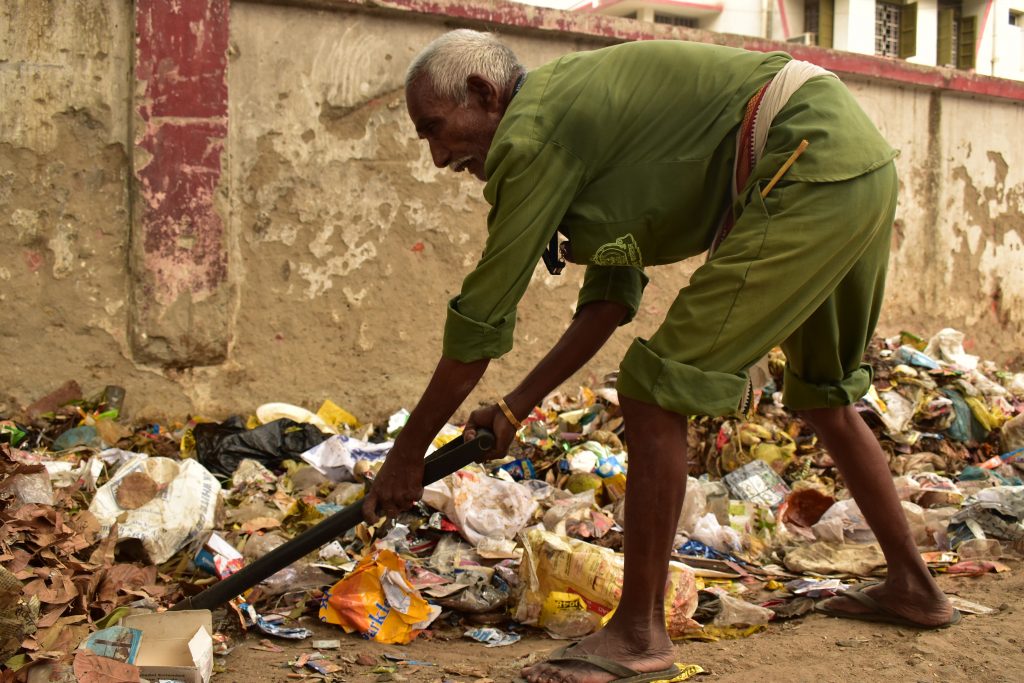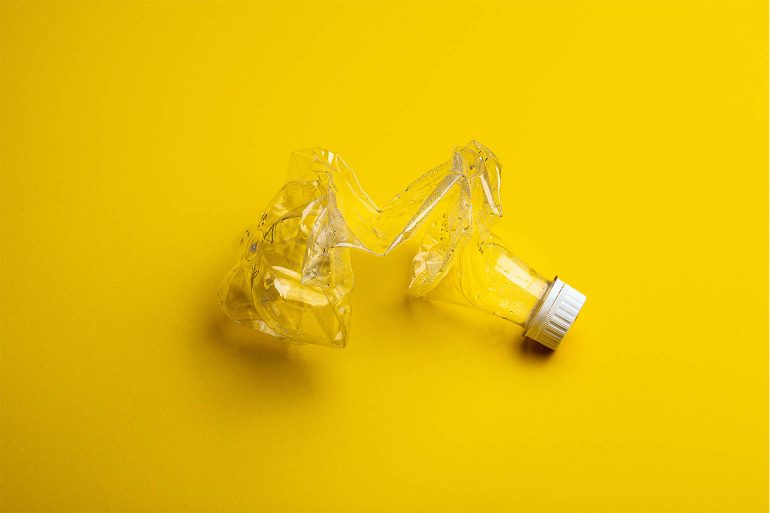A report published last year finds that India, at present, generates the most waste globally (even more than China), and that’s expected to increase substantially by 2050 unless urgent measures are not taken. In this vein, Prakash Javadekar (Minister of Environment, Forest and Climate Change) has stated that “India will, in another couple of decades, generate nearly thrice the waste it currently does — 165 million tonnes by 2030 and 450 million tonnes by 2050.” In fact, New Delhi, the Indian capital, alone produces around 10,000 tonnes of garbage every day. A huge portion of this waste is being dumped in three overflowing landfill sites — Bhalswa, Okhla and Ghazipur — which have exceeded their carrying capacities over a decade ago.

But who is responsible for this mounting waste? “Around the world, landfills are growing by some 3.5 million tonnes of garbage every day. Considering that waste is not an accident, that’s a lot of bad design. So, where did design go wrong, and what can we do to fix it? We need to face this problem head-on,” says Ayush Chauhan, managing partner and co-founder, Quicksand Design Studio & UnBox Cultural Futures Society. We speak to Chauhan about increasing waste and the role of designers in correcting course. Edited excerpts here:

We need to identify more indigenous design opportunities, and emphasize local/ traditional systems built on sustainable practices if we want to make a long-term impact.
Is the Indian consumer more conscious compared to its overseas counterpart?
Waste is a global problem, but one which disproportionately affects the most vulnerable people in the world. Consumption patterns are vastly different, as are waste management capabilities. So while we are facing the same storm, we are doing so in very different boats.
Though India has a long tradition of sustainable ways of living, the country’s fast-growing population is now facing major waste management issues. We are as deeply affected by the throwaway culture, as our western counterparts. With cheap commodities just a click away on numerous e-commerce portals, we are equally guilty of being consumed by use-and-throw culture with a declining sense of durability and value for money.
Having said that, crafting and repair skills have also long been an essential component of India’s frugal culture. Only a few decades ago, a network of cobblers, tailors, and mechanics among others formed the backbone of a robust repair economy. While this might have changed in modern times, we can revive these skills and communities, and adopt the ‘share-repair’ philosophy, which could begin to reduce the burden on landfills. This might be a good way to start connecting to the traditional networks that embody the ‘repair, reuse, recycle’ philosophy — kabadiwalas, seamstresses, local repair-men etc.
We need to identify more indigenous design opportunities, and emphasize local/ traditional systems built on sustainable practices if we want to make a long-term impact. How we make, sell and value things has to change and designers have a huge responsibility in this context.
Waste is the result of design’s disengaged stance thus far, when it comes to issues of policy, business and even governance at the strategic level.
Can waste production be attributed to bad design?
In a recent video launched by our partners, What Design Can Do (WDCD), Canadian designer Bruce Mau has a straightforward answer to this question: “Design got us into this mess, now it needs to take us out of it.” Think about it, historically design has facilitated the consumption, production and extraction of products — and to add to it, the seductive power of design has only tempted and lured consumers towards the linear take-make-waste approach at breakneck speed. Waste is the result of design’s disengaged stance thus far, when it comes to issues of policy, business and even governance at the strategic level.
We have pandered to society’s wants and desires for far too long. It is time to be more critical, and begin by acknowledging that we have indeed been short-sighted designers. We all have to step up as designers and consumers to stop the destruction of the planet. Design has the power to shift narratives, raise awareness, forge social connections, add value and lead to building more resilient communities. And that is precisely the intent behind the No Waste Challenge launched by What Design Can Do (WDCD) — a platform that advocates for design as a tool for social change.
We hope that with the ongoing challenge design plays a critical role in changing current production and consumption cycles. We need interventions at various scales — micro to meso — which can result in behaviour modification, and attitudinal changes leading to an environmentally conscious community on the whole.
[Note: The challenge has been anchored in India by the public engagement platform, UnBox Cultural Futures Society and research partners, Quicksand Design Studio. The city partners invite creative entrepreneurs to submit innovative solutions to reduce waste and rethink how we extract, produce and consume resources on our planet. The challenge is a call out to designers, creative entrepreneurs and innovators to get involved; entries can be submitted here.]
Lack of a holistic understanding of material ecology, coupled by a poor emphasis on systems thinking are some of the hindering factors which limit designer’s contribution in this space.
Are designers taught to consider waste production in their design in education institutions?
Designers are entrusted with increasingly complex challenges; however it is the onus of educational institutions and educators to incorporate systems and complexity thinking into design programs and prepare young designers for global, local and hyperlocal challenges. Lack of a holistic understanding of material ecology, coupled by a poor emphasis on systems thinking are some of the hindering factors which limit designer’s contribution in this space.
Designers need to focus on how to first design out waste or focus on recycling/ reuse, and then look at reducing waste during production and manufacturing.
How can designers focus on producing less waste?
We need to reflect on the gap designers and accompanying production systems have when it comes to thinking about the choices they make and the impact it has on our planet. How can we take less, make better and handle the issues at hand smarter? Here are a few provocations along the waste life cycle, for us to consider:
Take less: How can we inspire the use of fewer natural resources and consume more mindfully?
Make better: How can we make products and materials that are kept in use and/or regenerate natural systems?
Handle smarter: How can we use waste as a resource or dispose more responsibly?
So far, the issue of waste has largely been addressed through a “mopping approach”. Designers need to focus on how to first design out waste or focus on recycling/ reuse, and then look at reducing waste during production and manufacturing.
***
 The No Waste Challenge presented by What Design Can Do and the IKEA Foundation is now open for submissions! This global design competition focuses on addressing the enormous impact of waste and consumerism on climate change. We are looking for radical new ideas and design-driven solutions to reduce waste and rethink our entire consumption and production cycle.
The No Waste Challenge presented by What Design Can Do and the IKEA Foundation is now open for submissions! This global design competition focuses on addressing the enormous impact of waste and consumerism on climate change. We are looking for radical new ideas and design-driven solutions to reduce waste and rethink our entire consumption and production cycle.
Submit your proposals by 20 April 2021 and join us in accelerating the transition towards a just and circular society. To get started, learn more about the scope of the challenge, or check out the three design briefs available to participants.

